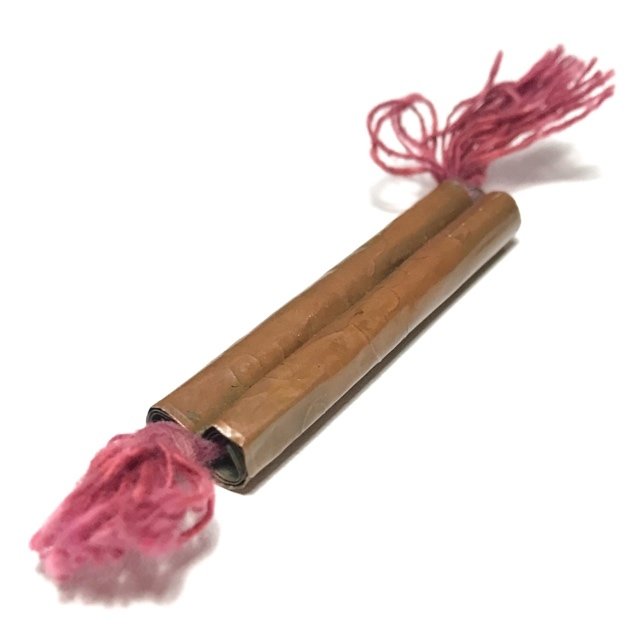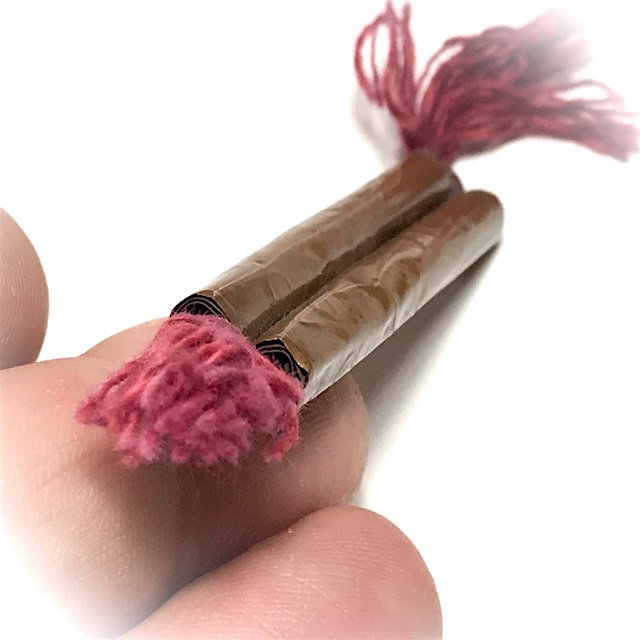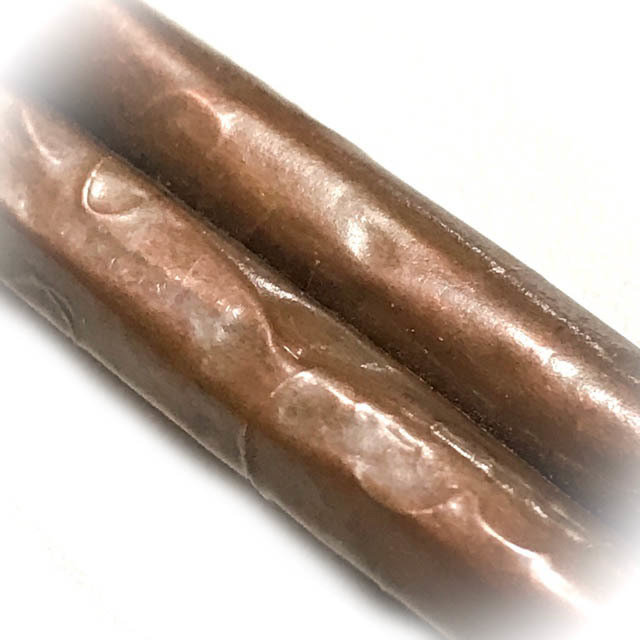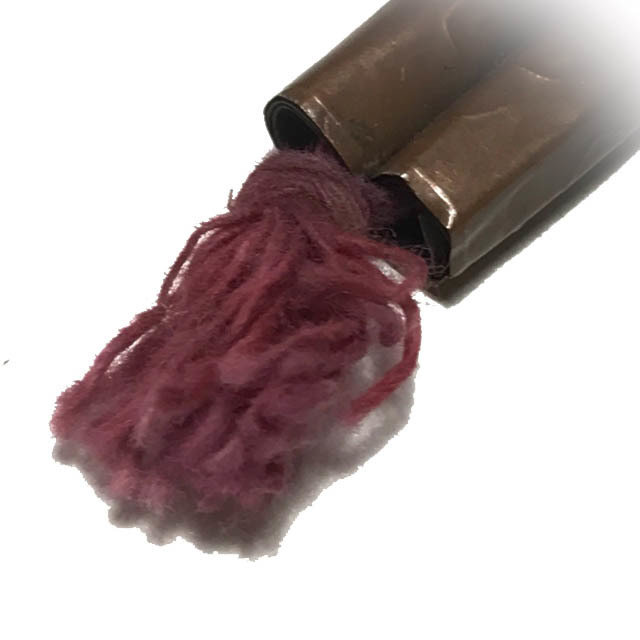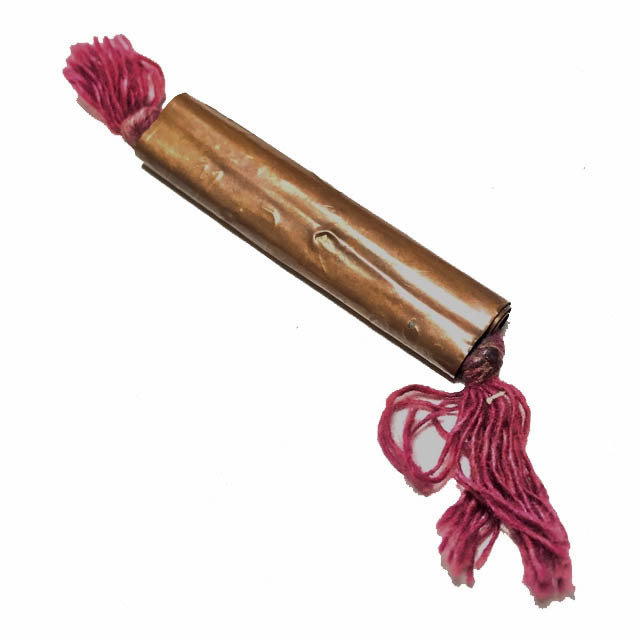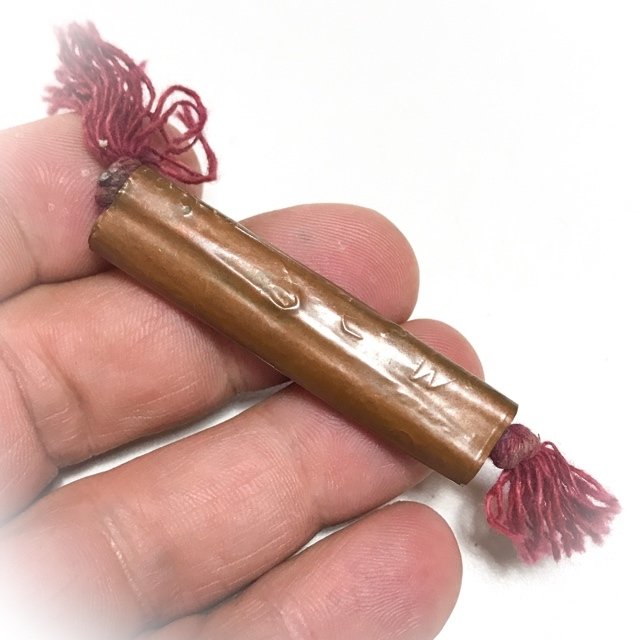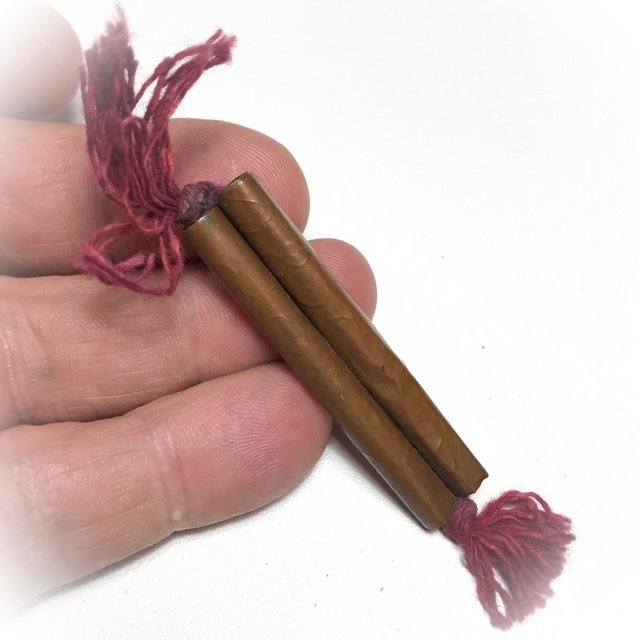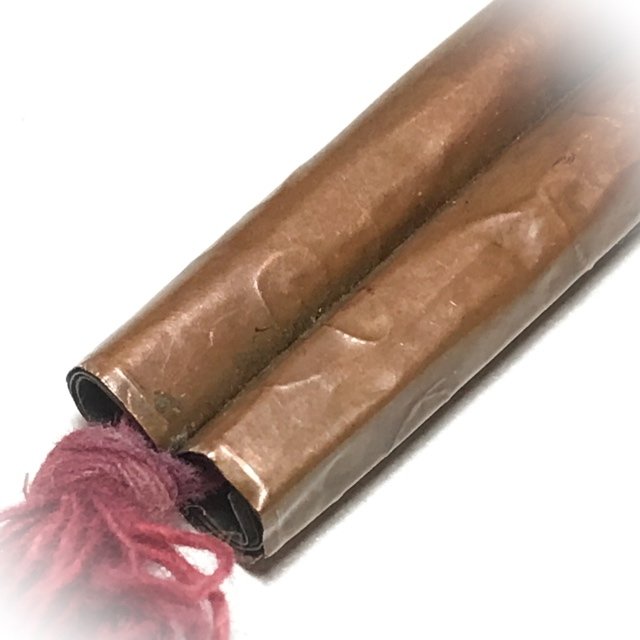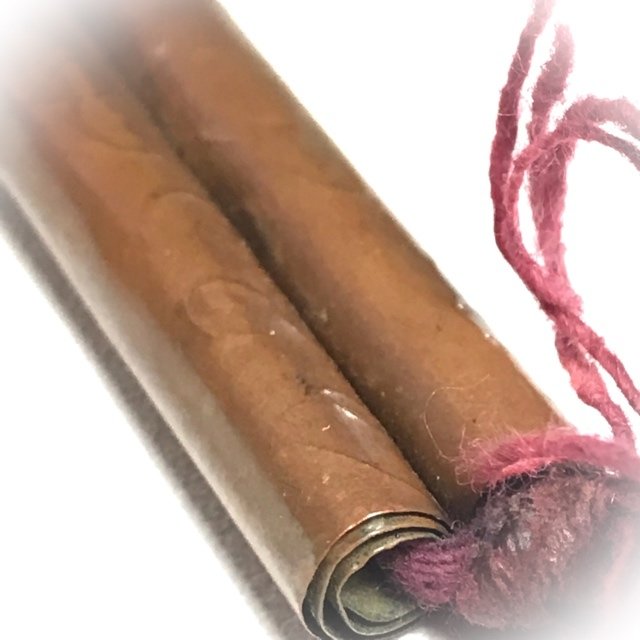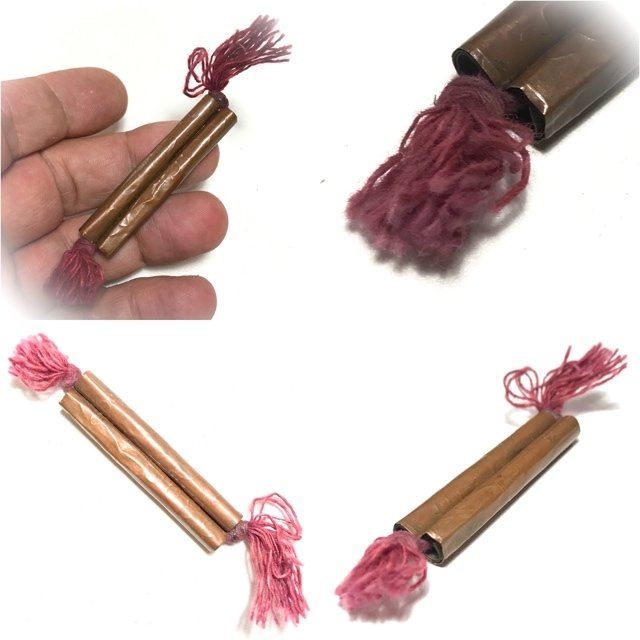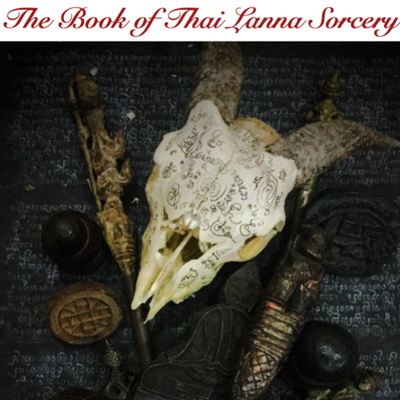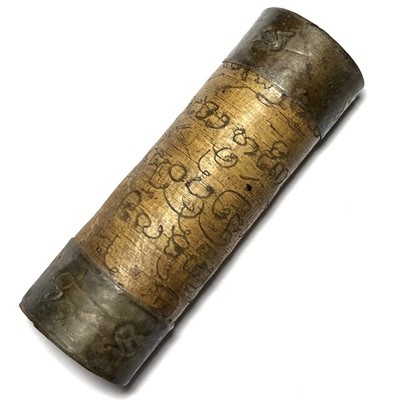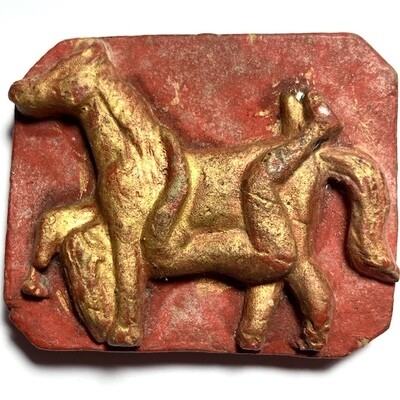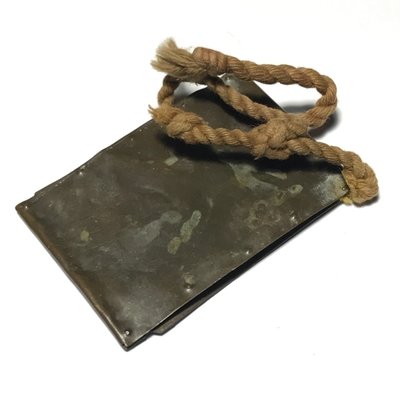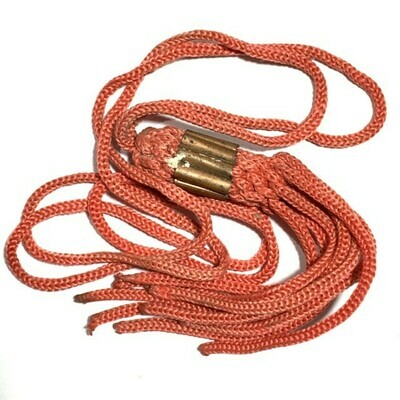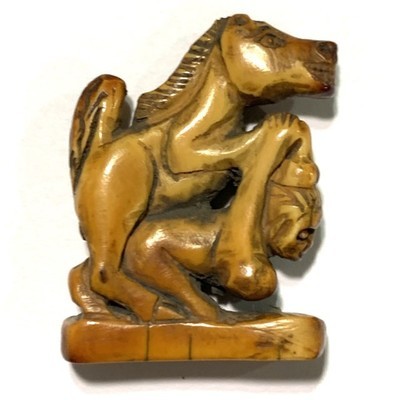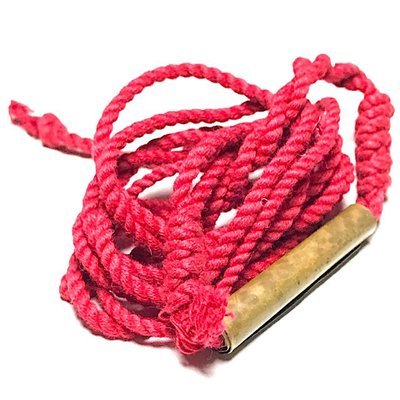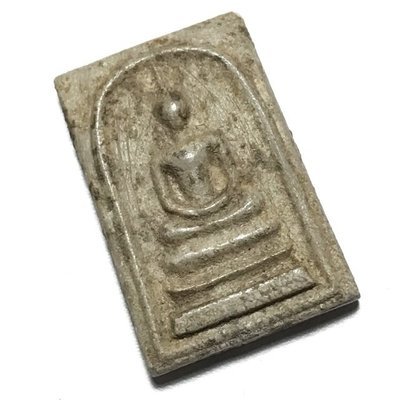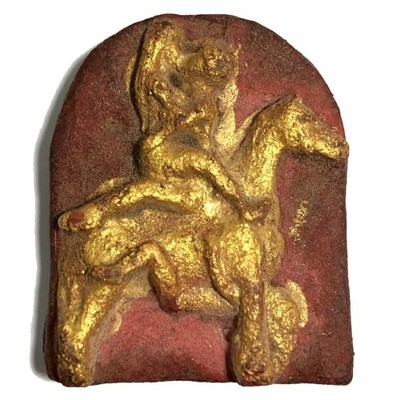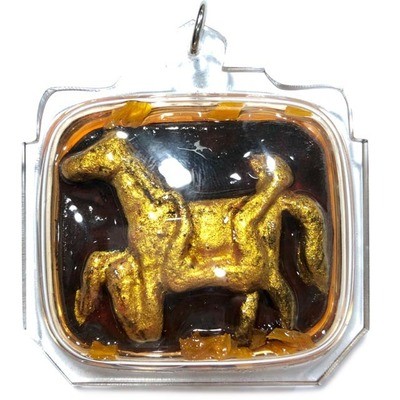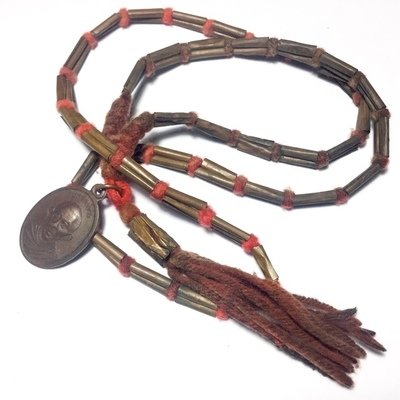Presenting a tiny but powerful and rare classic amulet from one of the Great Khao Or Masters of the 20th Century, Rian Glom Lek Hlang Chedi 2505 BE Nuea Tong Daeng Miniature Guru Monk Coin Por Tan Klai Wajasit
This Sacred amulet of the Great Khao Or Master of Nakorn Sri Tammarat, Master of Wat San Khan and Wat Pratat Noi, is a very rare amulet from Por Tan Klai’s 2505 BE Blessing Ceremony Edition, and is considered a ‘Jaek mae Krua’ type amulet (meaning ‘give to the kitchen maids and temple helpers’), which is suitable not only for men, but due to its miniature size, a perfect amulet for ladies or children to wear.

Rian Glom Lek 2505 BE Por Tan Klai Wajasit Wat Suan Khan
The 2505 BE edition of amulets of Por Tan Klai, is a highly preferred edition, which saw his famous ‘Rian Glom’ round Monk coin amulet with Chakra released, The Rian Glom Lek Hlang Chedi, and the Roop Tai Por Tan Klai Guru Monk Blesséd Photographamulets such as look om chan hmak and ya sen tobacco balls, and sacred powder amulets of various models.
A very rare and highly prized amulet for the devotees of Por Tan Klai to associate with his image and pray to him with a blessed image of the Guru, and the Chedi Relic Stupa on rear face for Buddhanussati and Marananussati. A powerful and Sacred amulet which has passed through the hands of the Guru and been blessed by him.
Por Tan Klai was one of the Top Guru Master Monks of the Last Century, and is considered one of the Four Great Masters of the Previous Generation of Lineage Masters of the Khao Or Southern Sorcery Lineage.
Kata Bucha Por Tan Klai
Takrut Sariga Koo Wicha Lanna Copper Yantra Spell with Blesséd Cloth - Luang Phu Kroo Ba Wang Wat Ban Den
One of the all time popular classic amulets of the Great Kroo Ba Wang, the Takrut Sariga in Nuea Tong Daeng on red spellbound cord, empowered with the Ancient Wicha Lanna by the Great Guru Master Monk and Deceased Ex Abbot of Wat Ban Den, Luang Phu Kroo Ba Wang. The Takrut is made from copper and is hand inscribed, and empowered with Magic Spells, in traditional style of the Northern Lanna Wicha, from this Great Deceased Master of Olden days. The Takrut is bound with red Lanna style Daay Daeng Akom sorceror's cord, which is an integral part of Lanna Sorcery with many amulets, and a trademark of the Lanna Masters such as Kroo Ba Wang, Kroo Ba Chum and Luang Phu Kam Saen, and the other great names of Thai Lanna Sorcery History. A very rare artifact indeed to see in the present era, the Takrut sariga Kroo Ba Wang is considered a sure bet for increased Metta in one's life.
The Takrut Sariga is renowned for its great Metta Maha Niyom and Maha Sanaeh power with jerajaa charming speech. The Nok Sariga (or, ‘Salika’) is a Golden Tongued Heavenly Bird which is attributed with immense Metta Mahaniyom and Maha Sanaeh qualities, and is along with the Hongsa, one of the Best Devas to seek assistance in ‘Jerajaa’ magic. Jerajaa means ‘Discussion’. The Golden Tongued Sariga bird enchants and charms the listeners of he who possesses the Wicha, bringing a hypnotic and charming effect, to influence and convince, making people see things your way.
Kroo Ba Wang was renowned for so many different kinds of amulets, ranging from his Takrut Gao Gum and other cord-bound Takrut Spells, his famous In Ma, In Koo, Paya Khao Kam, Pha Yant, Pra Rahu, and Guru Monk Coins, all of them being purely belonging to the Lanna Traditional Wicha.
Luang Phu Kroo Ba Wang is Legendary for his Maha Sanaeh Magic, was one of the most famous of the Northern Lanna Guru Masters of the Olden Days. Highly preferred for his In Koo, Pra Rahu, and Pha Yant Sacred Geometry yantra Cloth Spells. Of the Pha Yant he was especially renowned for his Pha Yant Ma Saep Nang Lady-Horse images.
Below; In Ma Saep Nang Sacred Powder amulet - Kroo Ba Wang
Luang Phu was born in 2434 BE, in the country into a family of farmers and market traders, In those days, the only way to get any schooling in the countryside was to stay in a temple and learn with the Monks, and so, at the age of nearly 9 years old, his father took him to live at the nearby temple, to learn to read and write.
After about 3 years. Luang Phu could read and write fluently enough, and so he was able to ordain into the Sangha as a Samanera Novice Monk in the year 2445 BE. Luang Phu reached the age to be ordained as a fully fledged Bhikkhu in the Buddha Sasana in the year 2455 and was ordained on the 5th of May of that year as a Bhikkhu, at 13:15 hours at Wat Ban Baen Temple. Luang Phu then began to practice Khom Sanskrit Agkhara and Wicha, and within a very short period of time became so adept that he could chant every single line of Agkhara from memory with great aptitude.
Pra Kroo Gantiya was his Upachaya Ordaining Officer, and Pra Ajarn Bpan was his Pra Gammawājājarn (Prompter). Pra Atigarn Bpum was his Pra Anusawanājarn (Witness). Luang Phu was given the Chāyā (official Monks Name) of Prohma Sēno. Luang Phu Kroo Ba Wang then stayed on at Wat Ban Baen in Lampoon for a period of 2 years more. After this, Luang Phu Kroo Ba Wang then moved to stay at Wat Ban Hmueang Jee, which was in his home area where he was born.
Luang Phu then continued to study and practice Wicha Akom and Khom Agkhara, for a further three years, until he became inspired to take up the practice of Tudong Solitary Forest wandering, and gain experience in Kammathana.

Luang Phu then travelled through the thick forest area of Pha Teub, on is way towards Chiang Saen, and stopped in the forest to practice for 6 months. Once he reached Chiang Saen, he stayed around the area practicing for some years, until he decided to travel towards Prae Province, where he finally arrived and stayed at the temple of Wat Den Chai.
He stayed at this temple to master the various Sorcert Methods of the Region, so that he would be able to perform Powerful Incantations enabling him to cast spells and blessings to offer protection, happiness and prosperirty to the fold, and to send metta and merits to the Nature Spirits of the Nether Worlds, with Compassionate Mercy Magic.
Once he had mastered this Wicha, he then set forth once more, and practiced Tudong, until he came to rest at a very peaceful place in the forest called 'Pha Den Gradtay', which was very auspicious in energy. There was a small village nearby which was impoverished, and Luang Phu then decided to build a temple with the help of the locals. But Luang Phu was first called back by locals of the temple at Wat Dton Tong, so he agreed and went backl to assist the with their needs.
After one year helping them, he was able to return to Pha Den Gradtay, and built three Kuti Huts and invited some other monks to come and stay, and assist in developing the temple. Then in the yeat 2508 Luang Phu Kroo Ba Wang began to build the Uposadha Shrine Room and the locals of the surrounding areas began to hear of his merits, and flock to the temple to make donations and assist.
The Uposadha was then finished in the the year 2510 BE. Luang Phu became famous for both is great ability to finish the temple of Wat ban den in Miraclulously short timespan, and also for his many Wicha, including Horasart (Astrology), Amulet making, Maha Sanaeh and Metta Maha Niyom Maha Lap Magic, and his ability to use Candle Magic to eliminate Bad Karma.

In the year 2513, time caught up with Luang Phu and he became ill, and began to weaken with age, and became unable to travel, and stayed for the rest of is life until his passing at Wat Ban Den in the year 2516 BE

The Takrut is Serm Duang, and will give Protection from Danger, and ease your way in life. Business will flourish, your speech (if wihin the precept of not lying), will be charming and convincing with the golden tongued celestial magpie sariga spell. Customers and Admirers will approach, money and gifts will flow in, good fortune will come, and life without disturbances. Enemies will become friends.
Kata (Incantations) for the Wicha Sariga
The above Kata can be found with text (Karaoke style) Phonetics to help practice with on this page; Kata Bucha Nok Sariga
The Takrut is a powerful Sacred Geometry based Talisman using the Wicha Sariga Celestial magpie spell, which has been used by ancient folk for thousands of years. The Takrut amulets of this Master are counted amongst the most highly preferred amulets of the Lanna Pantheon, and of the Devotees of Kroo Ba Wang.











